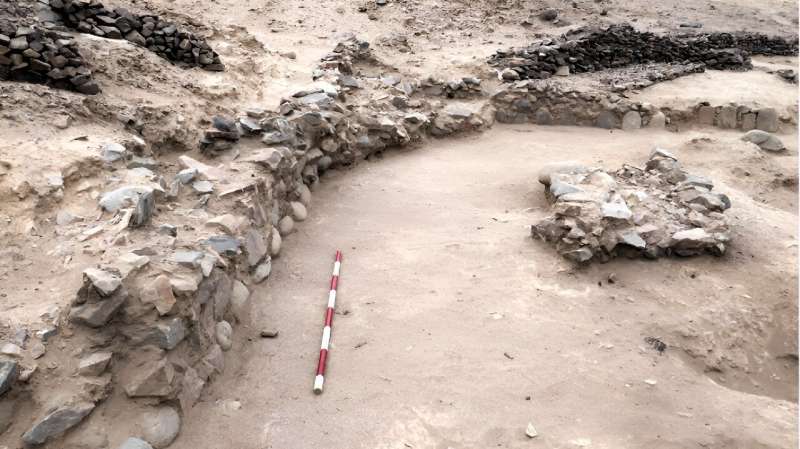This article has been reviewed according to Science X's editorial process and policies. Editors have highlighted the following attributes while ensuring the content's credibility:
fact-checked
trusted source
proofread
A new type of settlement from the time of the Wari State found in Peru

A research team from the Universitat Autònoma de Barcelona and the University of Almeria discovered in the latest excavations carried out at the site of El Trigal III, in the archaeological area of La Puntilla (Nasca, Ica, Peru), a new type of settlement. It is an architectural complex of large dimensions, consisting of a two-story building and a courtyard with warehouses from the time of the Wari State
Researchers made the discovery thanks to the digs they conducted at the end of 2022, under the framework of the La Puntilla Archaeological Research Project. Since 2005, the team or researchers have been working on the sites of El Trigal, next to the Aja River, on the northern slope of the La Puntilla mountain range. The archaeological site is located near the Orcona community (Nasca Province, Department of Ica, Peru).
Since 2012 the digs have focused on El Trigal III, where a settlement was discovered from the period of the Cahuachi State, dating back to between the 1st and 5th century CE, a period that corresponds to the making of geoglyphs with animal figures known at the Nasca Lines. In 2021, digs began in what is known as the North Precinct, and in 2022 researchers confirmed that the building had been constructed at a later time, during the time of the Wari State. Pending confirmation of the dates obtained by carbon 14, it is estimated that its chronology is between the 7th and 10th centuries CE.
The Wari State had its center in the city of Wari, located in the Andean highlands, in the Peruvian department of Ayacucho. From the 7th century onwards, it extended its political control from that region to territories in the highlands and the coast, up to the north of Peru. It is considered that this political expansion constituted an empire, with an important weight of the military activity of territorial conquest, but also with alliances and pacts with dominant groups of different regions, as could be the case of the Nasca valley.
The building of the North Precinct of El Trigal III measured about 130 square meters and was built with large stone walls, on top of which adobe walls were built. It had two floors, given the thickness of the walls and the volume of the collapsed material found. The walls were plastered in white and yellow, due to the remains adhered to the stones that made up the architectural material. And on the first floor, the one that has been preserved, there is evidence of food preparation and storage spaces.
Attached to this building was a large space formed by a courtyard with small rooms for storage, still in the process of excavation, inside the area known as the South Precinct. This area measured more than 500 square meters, and was delimited by walls made with large stones.
This type of architectural complex had not been documented so far in extensive excavations. However, knowledge existed of a ceramic model with this same configuration, found in a burial site in Ayacucho. The existence of a model indicates that the construction was previously planned. This fact is also known in the case of the territorial control centers where the Wari Empire located the warehouses in which they stored the tributes of the communities of the regions under state control.
The settlement of El Trigal III represents a new type of enclave, of rural character, in the territory of Wari, probably owned by a group of the imperial ruling class, which through servile labor could maintain the various crafts, food preparation and maintenance of warehouses, in the house and in its annexes, and also carry out agricultural work in the lands of the valley of the Aja River.
In the time of the Wari State, political centers are well known, such as the city of Wari, as are a series of territorial centers in different regions, as well as some establishments where there are singular buildings, apsidal in shape and most likely places of political and religious use, and also a great number of burial sites, many times without clear contexts, but with funerary offerings from that time. However, the settlement found by researchers of the La Puntilla project corresponds to a small rural place, albeit with an architectural component needing a great amount of work, most probably because it was inhabited by members of the upper class.
A preview of the results was recently published in the journal Informes y Trabajos, No. 21, of the Spanish Cultural Heritage Institute, and will also be presented at the 10th National Archaeology Congress of Peru, which begins on 28 November.
Provided by Autonomous University of Barcelona



















